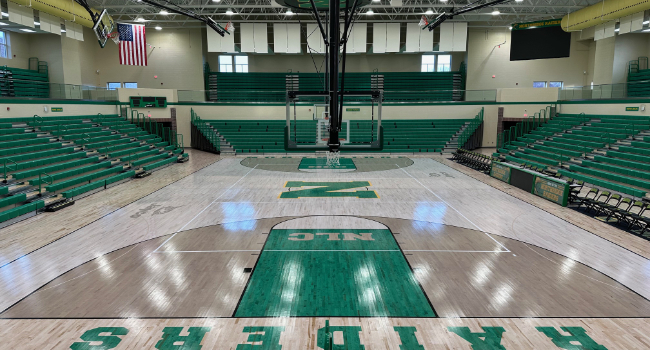
How a Rural School District Enhanced Safety, Reduced Vaping, and Improved Efficiency by Modernizing Security
- By Jeremy Miller
- July 11, 2025
As educational leaders, our primary mission is creating safe, productive learning environments where our students can thrive. Today, that unfortunately means addressing ever-evolving challenges that range from security threats to the growing epidemic of student vaping, all while managing tight budgets and (for many of us) geographically dispersed facilities.
I believe our district’s recent journey to modernize our security approach while balancing safety requirements, budget constraints, and educational priorities can offer insights for other school administrators facing similar challenges.
The Challenges of Securing a Rural District
School districts face some unique security hurdles based on their geography and infrastructure. At Middlebury Community Schools in Elkhart County, Indiana, our district encompasses seven schools (plus an administrative building) spread across 100 square miles of largely rural terrain. This distributed campus model creates inherent security challenges for our 4,300 students and 550 staff members.
For years, we struggled with an aging security infrastructure that no longer met modern requirements. Our outdated system provided limited visibility at key locations like entryways, hallways, and common areas. But arguably most frustrating was the fragmented nature of the system: each building maintained its own on-premises server, meaning that accessing footage required physical travel to each location.
For our School Resource Officers (SROs) and IT staff, this meant spending many, many hours driving between locations to investigate incidents after they occurred. Our system’s complex, unintuitive interface also limited its usefulness, as administrators, security personnel, and even IT staff found it difficult to operate effectively. As with many technology systems, if it’s not easy to use, it won’t be.
Maintenance issues compounded these problems. System outages were fairly frequent, and came without automated notifications. This left us with security gaps that we often discovered too late. When cameras failed, we required external technicians for repairs, an expensive proposition that could leave critical areas unmonitored for weeks at a time.
Finding a Sustainable Strategy that Prioritizes Education
It was clear modernizing our approach to physical security would address multiple district priorities simultaneously. We needed a new strategy that could meaningfully bolster campus safety, reduce unwanted behavior like vaping, and operate efficiently within our budget constraints (and do it all while supporting our primary mission of education).
After evaluating several options, we selected Rhombus, a cloud-managed physical security platform that integrates security cameras with environmental sensors. Unlike our previous strategy of buying individual systems that didn’t integrate and hoping for the best, we approach this as a comprehensive safety initiative with clear educational outcomes in mind.
The most immediate impact came from now having a centralized, cloud-based approach. Administrators and security personnel now access real-time information from any location, getting instant alerts when the system detects potential issues. This transformation has dramatically improved our response capabilities and eliminated the need for time-consuming travel between facilities.
Measurable Improvements in Safety, Behavior and Operations
The results have exceeded our expectations across multiple areas that matter to educational leaders, starting with student well-being. By installing Rhombus’ environmental sensors in middle and high school bathrooms coordinated with hallway cameras, we’ve created both detection capabilities and a visible deterrent for vaping. This approach respects privacy while sending a clear message that we take student health seriously. The result has been a 30% reduction in vaping incidents—a significant win for student health.
We’ve also seen dramatic improvements in incident resolution. Real-time alerts and immediate access to footage have reduced our average incident response time by ten minutes. When investigating past events, having more advanced search capabilities expedite review footage review to minutes (rather than the hours it previously required). Overall, we’ve reduced our investigation time by 70%.
Our upgraded system has helped our safety drills by enabling real-time tracking during simulated emergencies. During lockdown practice, staff members can monitor an acting “intruder” via cameras and communicate position updates throughout the building via radio. This capability gives our team confidence that they can respond effectively in actual emergencies.
From a practical standpoint, the move to a modern, reliable cloud-based security and monitoring system has delivered some pretty sizeable operational efficiencies. System outages have decreased by 80%, and we’ve saved approximately $10,000 annually in maintenance and repair costs. Our IT staff now saves 8-10 hours weekly by eliminating unnecessary travel and addressing system needs remotely. That’s time they can redirect to education-supporting initiatives.
Lessons for Educational Leaders
I think our experience offers several insights for educational administrators considering security upgrades. For one, consider approaching security technology as an educational initiative, not just an IT purchase. The most valuable benefits extend beyond surveillance to encompass net-positive impacts on student behavior, staff time allocation, and overall school climate.
Also, recognize that modern solutions can actually reduce total costs while improving capabilities. Despite initial investment, we’ve found significant operational savings through reduced maintenance, fewer repair calls, and more efficient use of staff time.
Finally, don’t underestimate the importance of usability. Our previous system’s complexity limited its adoption. Our new strategy gives us the intuitive interface required to ensure widespread usage across administration, security, and IT teams.
Looking ahead, our district plans to add more integrations to our safety ecosystem, including access control solutions like door readers. For educational leaders navigating similar challenges, I encourage you to evaluate your current security infrastructure against today’s standards. The technology exists to transform your approach—enhancing safety while supporting your educational mission and potentially improving operational efficiency. In today’s admittedly challenging educational environments, that’s a combination worth pursuing.
This article originally appeared in the July / August 2025 issue of Campus Security Today.